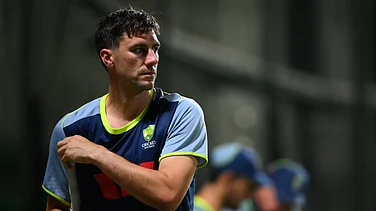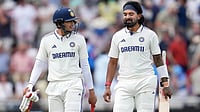Looking back at the history of T20 World Cups, the young Rohit Sharma, who made his India debut in the inaugural tournament in 2007, served early notice of his special talent in a crucial group game against South Africa. Rohit hit a maiden T20I fifty that saw him win the Player of the Match award and ensured India’s progression to the semi-finals of the tournament. (Full IPL Coverage | More Cricket News)
Read Part 1 HERE
In the final, walking in to bat at 111/4, Rohit was equally impressive as he smashed 30 off just 16 balls in a late flurry that helped India get to 157 for 5. He added an absolutely crucial 27 off the last two overs with Irfan Pathan, who scored just three of those runs. And it proved just enough in the end for India as they defeated Pakistan by five runs to lift their only T20 World Cup trophy till date.
Gambhir's Heroics
The current Kolkata Knight Riders mentor Gautam Gambhir had earlier hit a classy 75 off 54 balls that day at a strike rate of 138.8, to set up the match nicely for India. This was a game in which Yuvraj Singh had one of his rare off days of that tournament, falling for just 14 off 19 deliveries. He had earlier slammed Stuart Broad for six 6s in an over in a group game, en route to the fastest T20I fifty of the time, off a mere 12 balls. He had then similarly put Australia to the sword with an equally savage 30-ball 70 in the semi-final.
But that day, young Rohit Sharma’s late flourish made all the difference for India.
The Indian pacers, notably Irfan Pathan and RP Singh, fought back with crucial breakthroughs after Sreesanth had given away 21 runs in his opening over and at one stage, Pakistan needed 54 runs from the last four overs in the chase. But Misbah Ul Haq played brilliantly for 43 and brought Pakistan back from the dead, to the extent that three balls into the final over, they needed just six to win with one wicket in hand.
The Winning Moment
At this point, Misbah attempted a scoop over short fine leg off Joginder Sharma, and Sreesanth ran backwards to take the catch that sealed India’s victory. Misbah slumped to the ground in despair, even as umpire Mark Benson went over to console him.

The inaugural T20 World Cup was played just four years after the England Cricket Board had initiated the first professional ECB Twenty20 Cup Championship in 2003, replacing the 50-over Benson and Hedges Cup. This championship was played amongst 18 English counties at the time, seven of whom had voted against having the format.
BCCI's Resistance
The BCCI, however, was still not very convinced about T20 cricket, which sounds ironic today after the format’s huge subsequent success in India. “T20? Why not ten-ten or five-five or one-one?” Niranjan Shah, the then BCCI honorary secretary, had asked at the ICC board meeting in March 2006 when a World T20 competition was discussed.
“India will never play T20,” he had declared.
They later consented to it after a not-very-well-organised ODI World Cup held in the West Indies in early 2007, but on the condition that participation at the tournament that year would not be made mandatory by the ICC. Even so, India went into that 12 -team World Cup without its main players of the time, Sachin Tendulkar, Sourav Ganguly, Anil Kumble, VVS Laxman and Rahul Dravid.
Which sounds inconceivable today, in the light of subsequent events.
It eventually turned out to be quite a spectacular show, as Chris Gayle slammed the first T20I hundred, getting 117 off just 57 balls in the opening match against South Africa at Johannesburg. Zimbabwe then upset Australia the very next day in the second match, and Brett Lee went on to take the first T20I Hat Trick against Bangladesh a few games later.
And of course, there was the spectacular ‘six 6’s in an over’ carnage by Yuvraj Singh that set the tournament alight.
Before the India-Pakistan face off that went down to the wire, equally spectacularly, in the final.
The T20 World Cup was here to stay.
And in an uncanny portent of things to follow, Shah Rukh Khan lent a bit of movie star magic to the inaugural tournament, waving to his fans from the galleries as the cameras zoomed in on him for the big screen. He would come back there again a few years later with his franchise Kolkata Knight Riders, when the then newly-launched IPL moved to South Africa as India went into a General Election at home.
All of which sounds so familiar today. But was a huge novelty at the time.
(That concludes part 2 of this series. The third and final instalment analyzes India and other teams' combinations and highlights the players to watch out for in this edition)
The views and opinions expressed are those of the author. The author is a veteran Wing Commander of the Indian Air Force, who has played Ranji Trophy for Services.






























